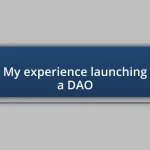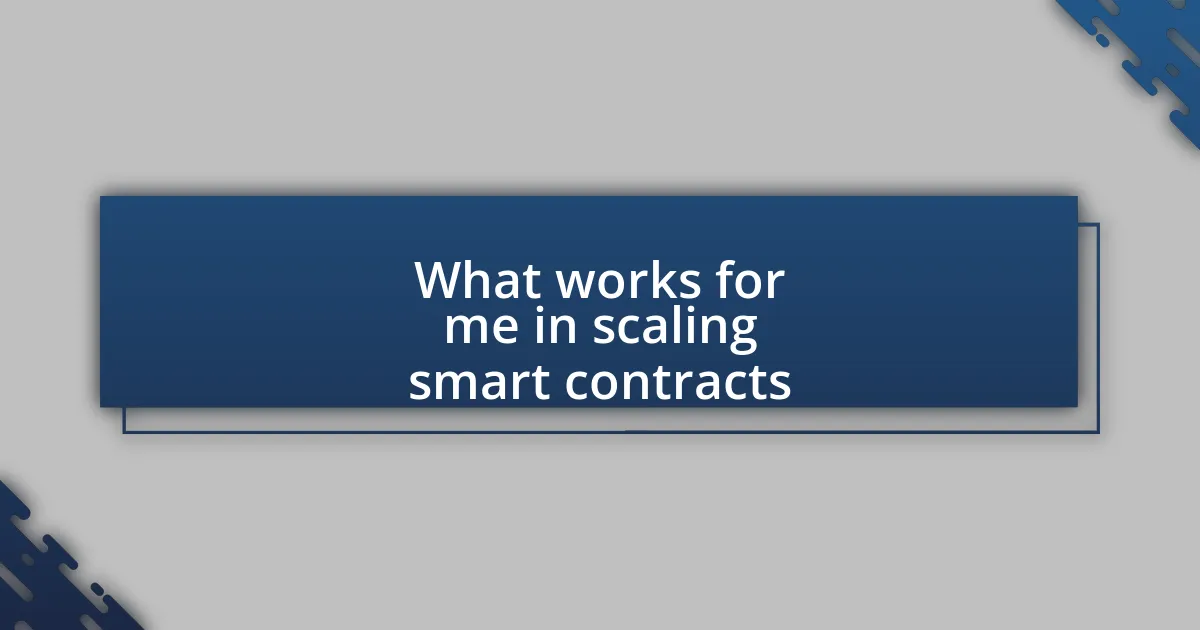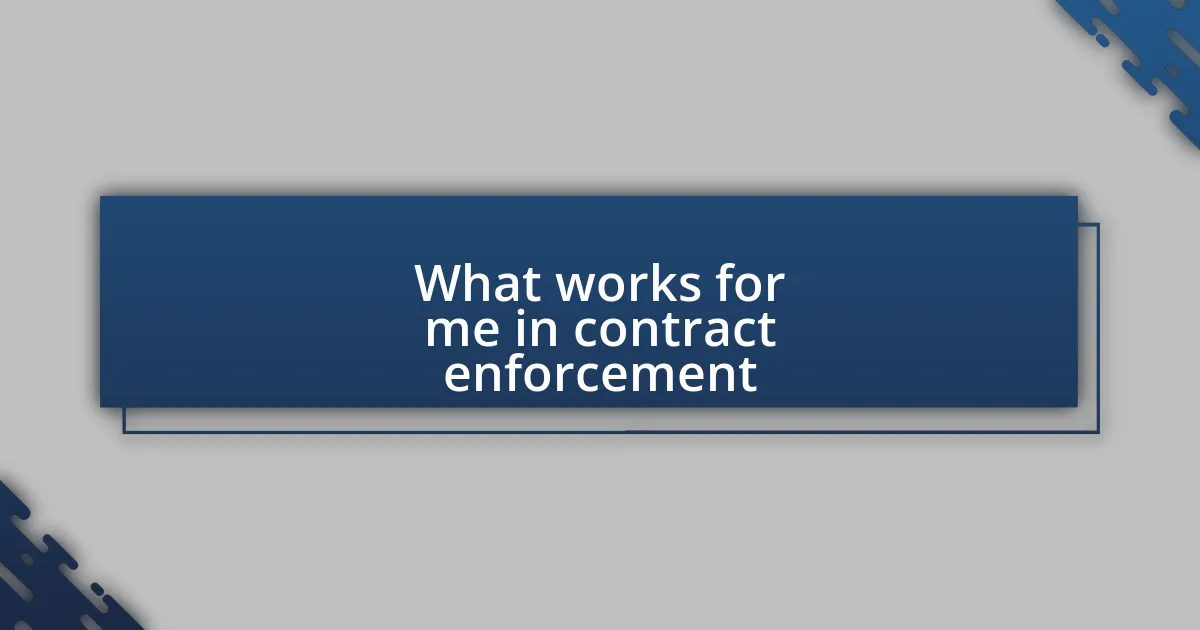Key takeaways:
- Decentralized applications (dApps) empower users by operating independently on blockchain networks, enhancing transparency and trust through immutable transactions.
- Choosing the right blockchain platform is critical, with factors like transaction speed, fees, and smart contract languages influencing project success.
- Best practices for smart contract development include thorough testing, simplicity, modularity, and comprehensive documentation to avoid costly errors.
- Real-world use cases, such as decentralized finance and supply chain management, demonstrate how dApps can transform industries by fostering transparency and direct user engagement.
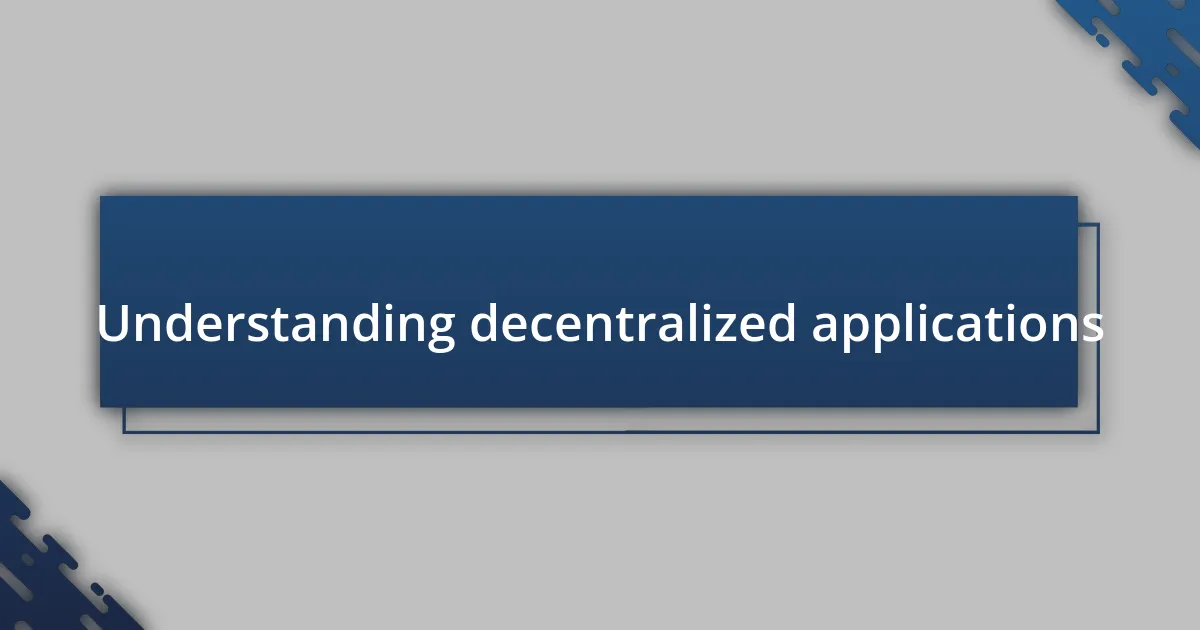
Understanding decentralized applications
Decentralized applications, or dApps, operate on a blockchain network, which allows them to function independently of a central authority. I remember the first time I deployed a dApp; the sense of empowerment was palpable. It felt like stepping into a realm where I could create without the constraints typically imposed by traditional platforms.
One of the defining characteristics of dApps is their transparency and immutability. Each transaction is recorded on the blockchain, making it nearly impossible to alter past data. Have you ever wondered how much trust plays a role in our online interactions? With dApps, trust shifts from intermediaries to the technology itself, which was a revelation for me.
Moreover, dApps can foster a sense of community and collaboration among users. There’s something incredibly fulfilling about contributing to a project that doesn’t belong to a single entity but rather thrives on collective input. It’s like being part of a movement—have you ever felt that thrill when you realized you were part of something bigger?
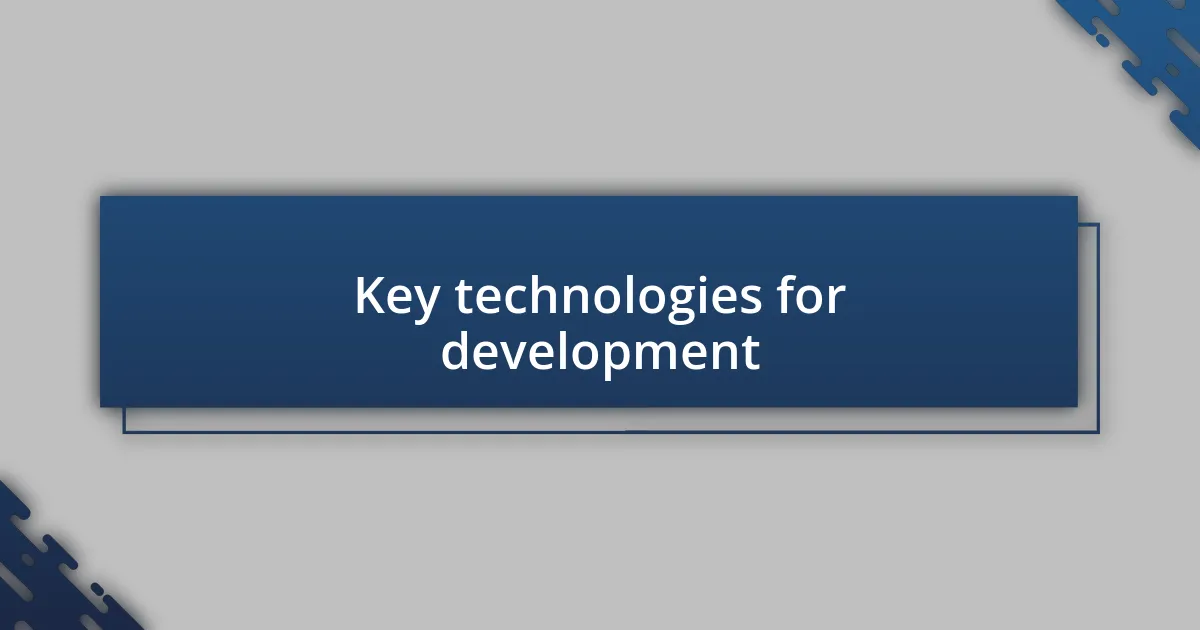
Key technologies for development
When developing decentralized applications, several key technologies stand out. I’ve found that understanding how these technologies interconnect can make a significant difference in the development process. For example, smart contracts are at the heart of dApps, enabling automated and immutable agreements on the blockchain. My first encounter with smart contracts was like discovering the engine of a well-oiled machine; they allow seamless interactions without the need for intermediaries.
Here are some essential technologies to consider:
- Blockchain Platforms: Ethereum, Binance Smart Chain, and Solana are popular choices, each with unique features.
- Smart Contract Languages: Solidity and Vyper are widely used for Ethereum-based dApps, while Rust and Move are gaining traction in other ecosystems.
- Development Frameworks: Truffle and Hardhat simplify smart contract deployment and testing.
- Decentralized Storage: IPFS (InterPlanetary File System) is often used to store large files off-chain, allowing dApps to remain efficient.
- Oracles: Technologies like Chainlink provide dApps with real-world data, bridging the gap between blockchain and the outside world.
Diving deeper into decentralized application development involves navigating through this technological landscape. I vividly recall grappling with choosing the right blockchain platform during my initial projects; it felt like deciding the foundation of a house. Each decision played a crucial role in the dApp’s scalability and performance. Ultimately, the blend of these technologies can define the success of your decentralized application.
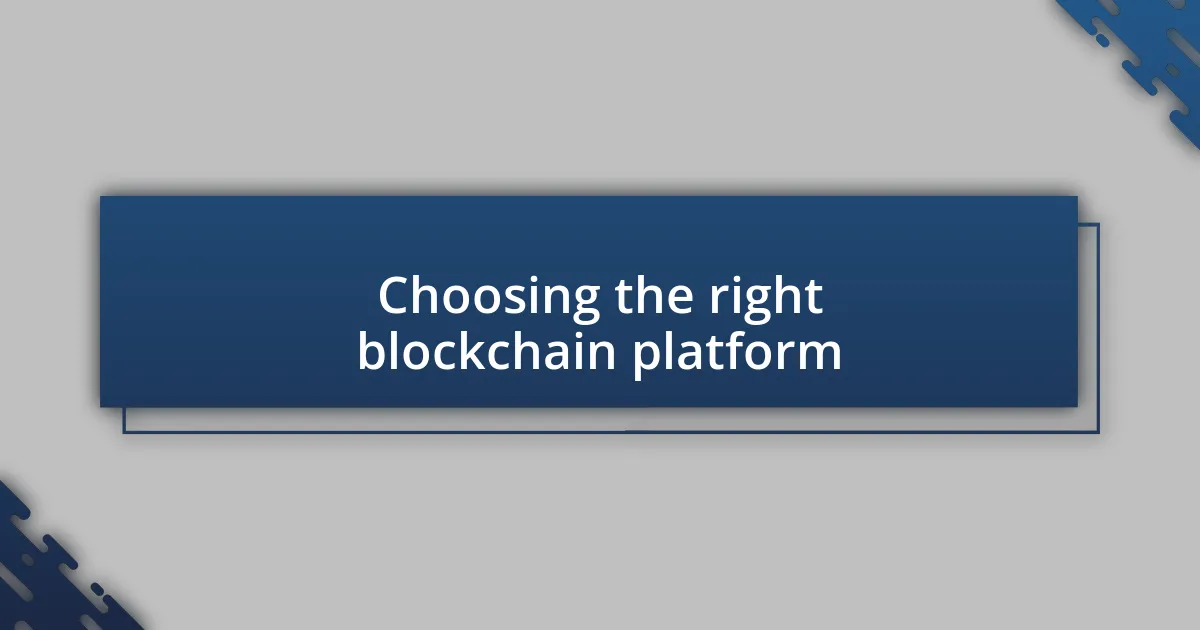
Choosing the right blockchain platform
Choosing the right blockchain platform can seem overwhelming at first. I remember when I was faced with the decision between Ethereum and Binance Smart Chain for my first dApp. Ethereum’s robust developer community and mature ecosystem were appealing, yet Binance Smart Chain’s lower transaction fees and speed caught my attention. Ultimately, I learned that the correct choice hinges on your project’s specific needs, including scalability, security, and cost efficiency.
There’s a world of options out there, and it’s essential to assess the technical requirements of your decentralized application. For instance, if you’re crafting a finance-related app, you might prioritize platforms offering higher throughput and speed. In my experience, performance metrics like transactions per second (TPS) can spell the difference between user satisfaction and a frustrating experience. I’ve seen firsthand how latency can impact an app’s usability, reinforcing the significance of selecting the right platform.
To help clarify and compare various blockchain platforms, here’s a table summarizing some key attributes:
| Platform | Transaction Speed | Fees | Smart Contract Language |
|---|---|---|---|
| Ethereum | 15-30 TPS | High | Solidity |
| Binance Smart Chain | 60 TPS | Low | Solidity |
| Solana | 65,000 TPS | Low | Rust, C |
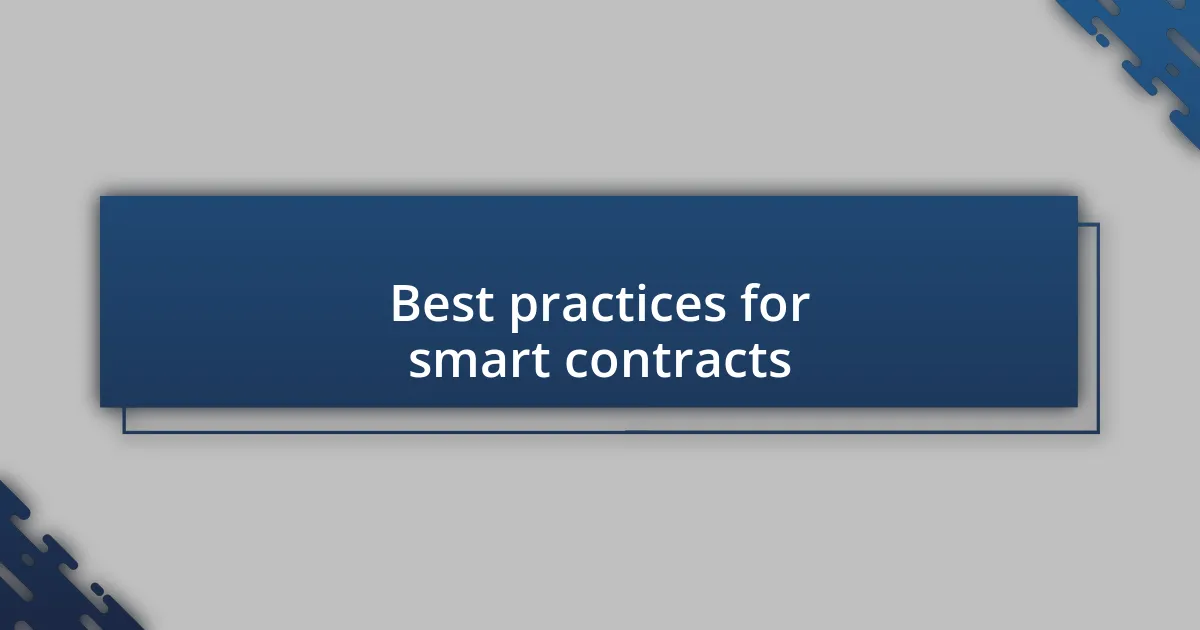
Best practices for smart contracts
When developing smart contracts, one of the best practices I’ve learned is to always write unit tests. In one of my early projects, I decided to skimp on this step to save time and ended up deploying a contract with a harmful bug. That experience taught me the hard way that thorough testing is vital. It helps ensure that every function behaves as expected, which is crucial because even minor errors can lead to significant financial loss.
Another key practice I’ve adopted is to keep smart contracts simple and modular. In my initial attempts, I packed too much functionality into single contracts, leading to complexities that were difficult to manage and debug. By breaking contracts into smaller, focused components, I found it much easier to maintain and update them. This modular approach not only enhances security but also simplifies the auditing process—something that should never be overlooked.
I also emphasize the importance of code comments and documentation. While coding can sometimes feel like an isolated task, I remind myself that someone else (or even my future self) will read that code down the line. I recall a scenario where I returned to a smart contract months later, and the lack of comments made it nearly impossible to recall my thought process. Adequate documentation serves as a roadmap and saves a lot of headaches during later audits or updates. How do you ensure your own code remains understandable over time?
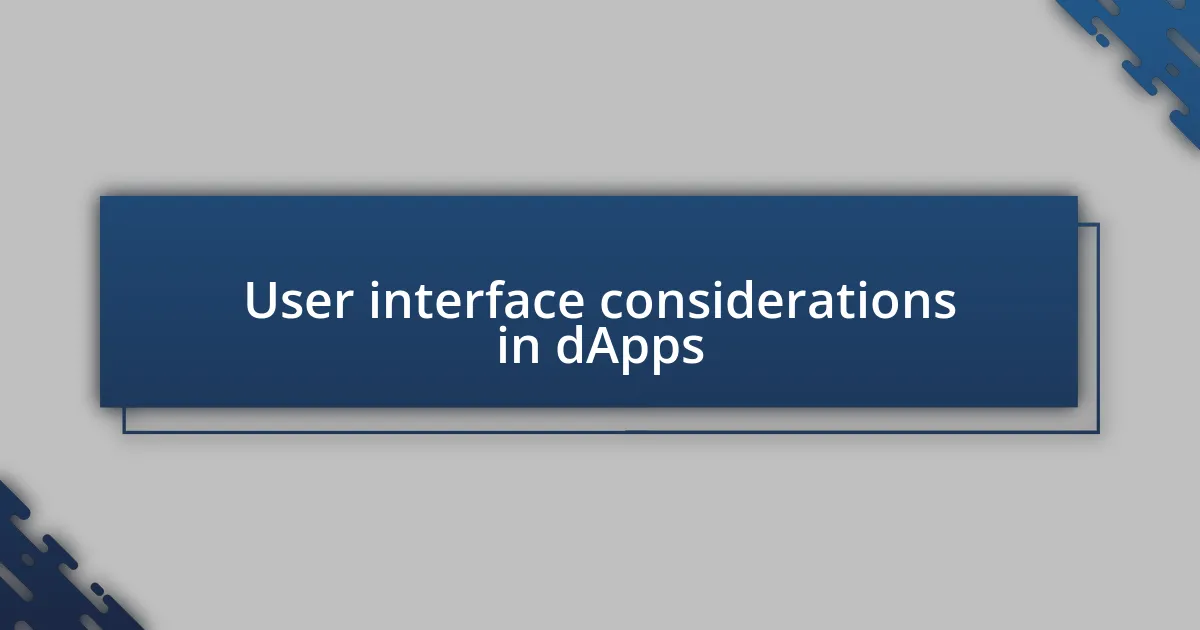
User interface considerations in dApps
When it comes to designing the user interface for decentralized applications (dApps), one of the first challenges I encountered was balancing functionality with usability. I vividly remember developing a dApp that offered a range of features, but the interface felt cluttered and overwhelming. It became clear that simplifying the user experience is crucial. Users should be able to navigate the app intuitively, without getting lost in complex layouts or jargon that can deter them from engaging fully.
Another important consideration is the feedback mechanism. During a project, I implemented real-time feedback for user actions, such as transaction confirmations. This approach significantly reduced anxiety for users who were new to crypto; they often worried about whether their actions were successful. I believe this instant validation is key to fostering trust within the dApp ecosystem. How do you determine the right balance between providing feedback and avoiding information overload for your users?
Additionally, accessibility is a vital component that I often reflect on. In one of my early projects, I overlooked the needs of users with disabilities, which resulted in a frustrating experience for some. This taught me that accessibility features, like keyboard navigation and screen reader compatibility, are not just optional enhancements but essential elements for making a dApp inclusive. Creating a universally accessible interface allows me to reach a broader audience while genuinely considering everyone’s needs. What barriers can you identify in your own projects that might hinder user accessibility?
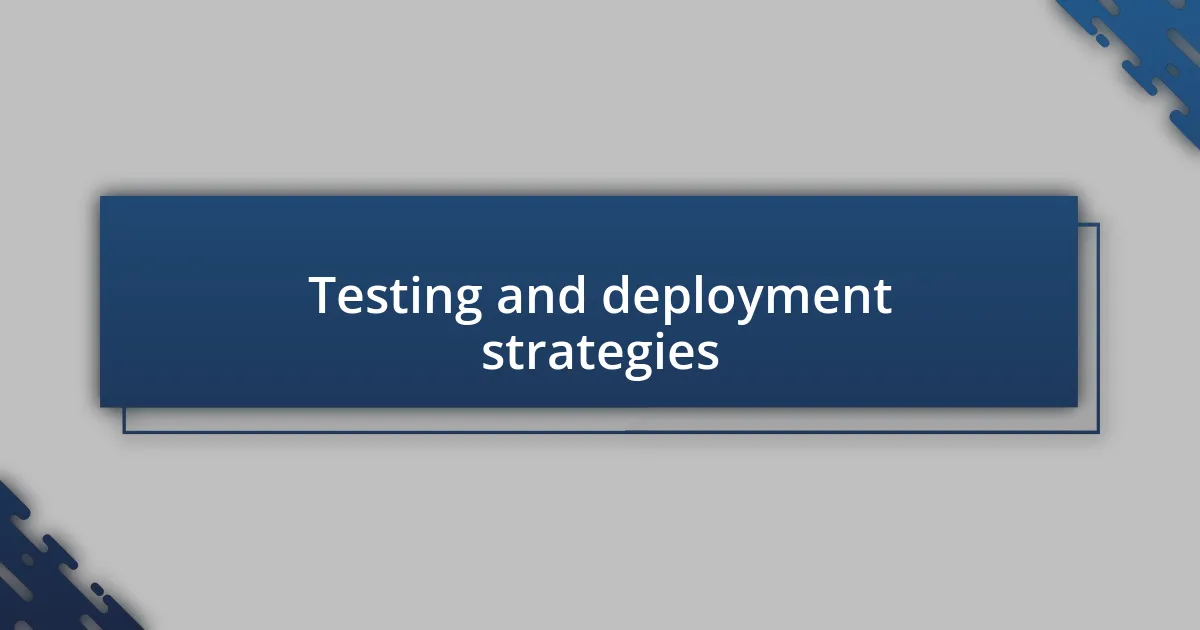
Testing and deployment strategies
Testing a decentralized application (dApp) requires a systematic approach to ensure reliability and security. In my experience, I adopted a multi-layered testing strategy, starting with unit tests to validate individual components. I recall working on a blockchain-based voting dApp where thorough testing of the smart contracts was crucial. Any oversight could compromise the integrity of the votes, which made me realize the importance of comprehensive testing from the ground up.
Once the unit tests were in place, I moved on to integration testing. I vividly remember a scenario where diverse smart contracts interacted with each other, leading to unexpected behavior. It was then that I understood the necessity of simulating user interactions in a test environment. How can you be confident in a system where components are not thoroughly vetted in isolation and together? I made sure to create tests that mimicked real-world usage, allowing me to catch issues early before deploying to the mainnet.
Deployment strategies are equally critical. I learned the hard way that rushing to deploy can lead to critical failures. During one project, I opted for a phased rollout, starting with a test network before transitioning to production. This staggered approach not only reduced risk but also provided me with invaluable insights on user behavior and system responses in a controlled setting. Have you considered how a careful deployment could prevent potential pitfalls in your projects?
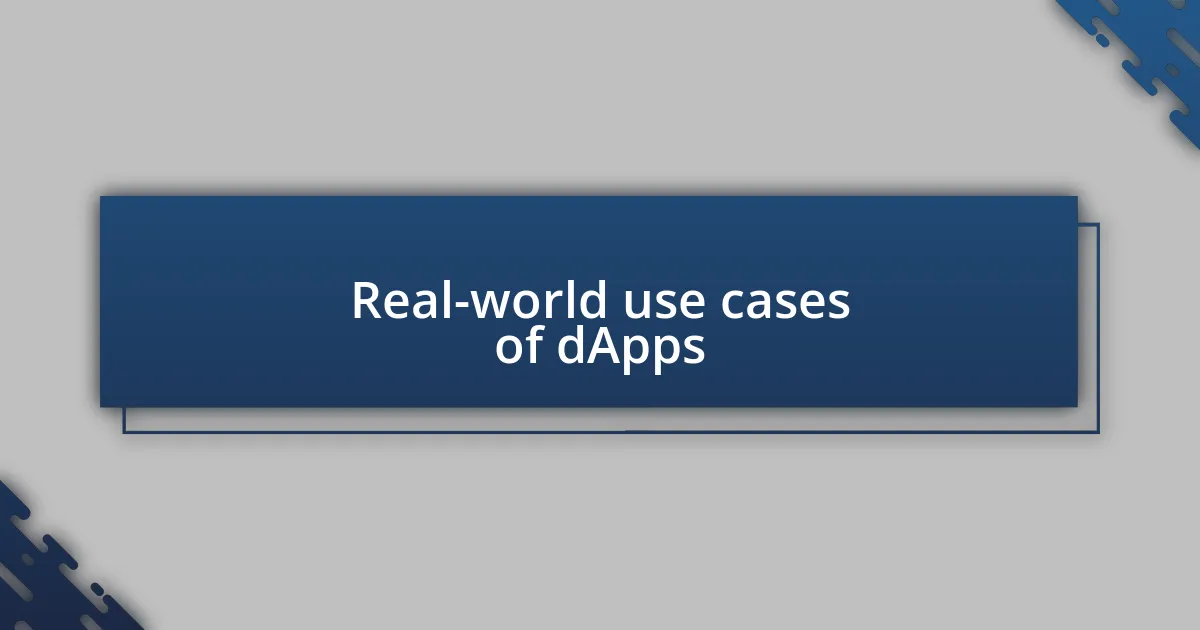
Real-world use cases of dApps
Real-world use cases of decentralized applications (dApps) are driving transformation across various industries. One such example that stands out to me is the emergence of decentralized finance (DeFi). I vividly recall exploring a lending platform built on Ethereum, where users could lend and borrow cryptocurrencies without intermediaries. This innovative approach not only empowered individuals to manage their assets directly but also highlighted the potential of smart contracts to automate complex transactions seamlessly. Have you ever thought about how this technology might change traditional banking?
Another impactful use case is in the realm of supply chain management. I once collaborated on a project that utilized a dApp to track the journey of organic food products from farm to table. It was fascinating to see how blockchain increased transparency, allowing consumers to verify the origin and production practices of their purchases. This experience reinforced my belief that dApps can forge trust in markets where deceit can easily occur. Isn’t it incredible how technology can foster a more ethical consumption experience?
Healthcare is yet another area where dApps are proving invaluable. I remember discussing a potential application that could securely store patient data on a blockchain, giving individuals more control over their medical records. This could streamline processes significantly, from allowing patients to share information with multiple providers to ensuring data integrity. It really made me ponder: what if patients could manage their health records with the same ease as they manage their social media accounts? The possibilities are endless, and dApps are at the forefront of this digital evolution.



